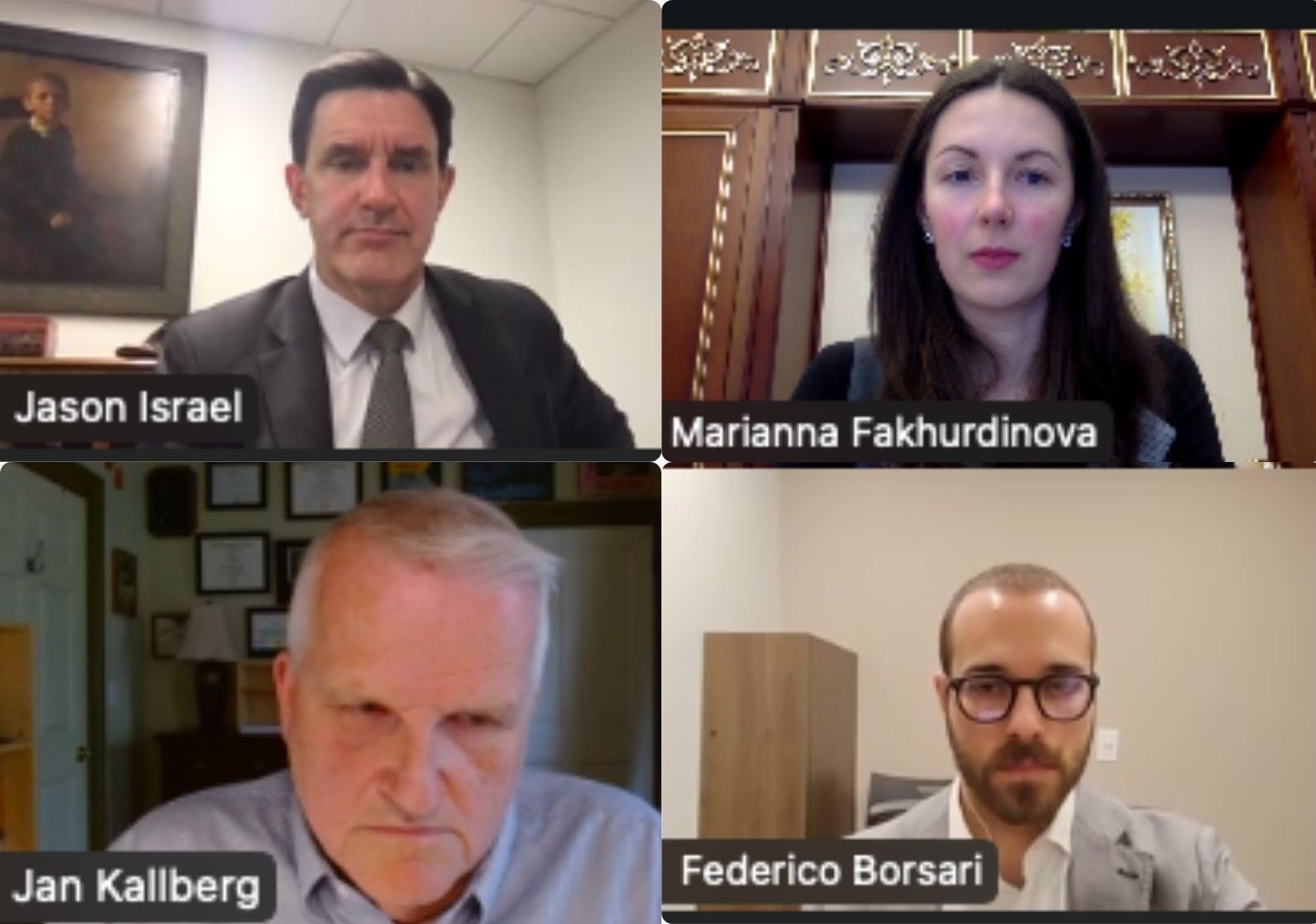Auf dem heutigen CEPA-Pressegespräch zur Wiederbelebung der transatlantischen Strategie für die Verteidigungsindustrie bot Mariana Fakhurdinova, TDC-Koordinatorin des EU-Ukraine-Partnerschaftsprogramms, einen wichtigen Überblick über die sich entwickelnde Rolle der Ukraine bei der Gestaltung der künftigen transatlantischen Verteidigungszusammenarbeit.
In einer Diskussion, an der führende Verteidigungsexperten von beiden Seiten des Atlantiks teilnahmen, beleuchtete Mariana den strategischen Wert der Ukraine als Partnerin und Wegbereiterin in der aufstrebenden Verteidigungslandschaft sowie die systemischen Hindernisse, die die Integration des Landes in das breitere verteidigungsindustrielle Ökosystem der USA und der EU noch immer einschränken.

Haupthindernisse für die Zusammenarbeit zwischen den USA und der Ukraine in der Verteidigungsindustrie
Fakhurdinova highlighted that, while recent cooperation has accelerated—especially through efforts like the FrankenSAM project, 155mm artillery co-production, and the 2023 Defense Industrial Base Conference—multiple barriers persist:
- Security risks from ongoing Russian aggression continue to deter long-term U.S. and foreign investment.
- Regulatory hurdles, including ITAR restrictions and Ukraine’s own export bans, hamper co-production and tech transfers.
- Corruption perceptions, despite meaningful Ukrainian reforms, remain a concern in Washington.
- Financial limitations, with Ukraine’s government procuring only $6B out of a $20B industrial capacity in 2024, and structural underinvestment impeding rapid scale-up.
- Industrial fragmentation, as many Ukrainian firms remain small, innovative, but uncoordinated—lacking economies of scale for major joint projects.
Prioritäten für das zukünftige NATO-Forum zur Verteidigungsindustrie
Mit der Perspektive auf die Zukunft forderte Fakhurdinova die Akteure der NATO und der EU auf, sich auf folgende Themen zu konzentrieren:
- Strategic alignment between NATO and EU industrial strategies to prevent duplication and reinforce capability.
- Removing procedural and regulatory barriers to spur more joint ventures and pooled procurement.
- Accelerating technology integration, particularly in AI, quantum, and space systems.
- Improving cyber and hybrid warfare resilience, where Ukraine’s battlefield experience provides critical lessons.
- Public-private collaboration, especially through flexible and fast-tracked funding for innovative defense tech.
Einzigartige Beiträge der Ukraine zur transatlantischen Verteidigungsbasis
Mariana unterstrich den aktuellen Beitrag der Ukraine zu den transatlantischen militärischen Kapazitäten:
- Combat-tested innovation: Ukraine serves as a proving ground for NATO-standard and experimental systems, driving modernization.
- Emerging tech leadership: Ukraine leads in drones, electronic warfare (EW), and battlefield AI—often outpacing slower-moving Western bureaucracies.
- Agile production: Ukraine offers low-cost, rapid manufacturing in key areas like munitions, EW, and UAVs—complementing overstretched Western supply chains.
- Cyber and hybrid resilience: Hard-won expertise in repelling Russian cyberattacks and disinformation is an underutilized NATO asset.
- Raw material diversification: Ukraine can contribute critical inputs, from lithium and uranium to advanced chips, supporting transatlantic supply chain security.
Verteidigungskooperation EU-Ukraine: Chancen und Hindernisse
Mariana evaluated the potential and limits of EU initiatives, including the ReArm Initiative, the Ukraine Support Instrument, and upcoming EDF/SAFE mechanisms:
Möglichkeiten:
- Direkte Unterstützung bei den Schlüsselfähigkeiten (z.B. Luftabwehr, Artillerie, Drohnen).
- Beteiligung der Ukraine an gemeinsamer Beschaffung und Koproduktion im Rahmen von SAFE.
- Modernisierung durch Integration in die EU-Verteidigungsstandards und den EU-Binnenmarkt.
- Öffentliches Produktionspotenzial: Lieferung zu Festpreisen durch staatliche Unternehmen in Kriegszeiten.
Herausforderungen:
- Mangelnde Klarheit bei der Umsetzung der EU-Vorschläge.
- Inkompatibilität zwischen den ukrainischen und den EU-Rechtsvorschriften.
- Exportbeschränkungen und finanzielle Zwänge behindern die Vorteile der Koproduktion.
- Nationaler Protektionismus in den EU-Staaten könnte eine gerechte Beschaffung beeinträchtigen.
- Der anhaltende Krieg und die ungeschützte Infrastruktur schränken die industrielle Skalierung ein.
Mehr Informationen findet man über den Link: https://cepa.org/transcripts/transatlantic-defense-industrial-strategy/